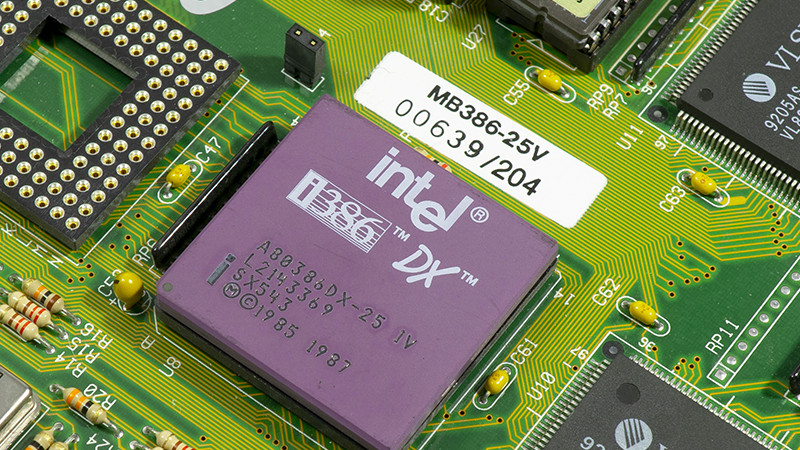
If we were to think of a retrocomputer, the chances are we might have something from the classic 8-bit days or maybe a game console spring to mind. It’s almost a shock to see mundane desktop PCs of the DOS and Pentium era join them, but those machines now form an important way to play DOS and Windows 95 games which are unsuited to more modern operating systems. For those who wish to play the games on appropriate hardware without a grubby beige mini-tower and a huge CRT monitor, there’s even the option to buy one of these machines new: in the form of a much more svelte Pentium-based PC104 industrial PC.
In A World Of Cheap Chips, Why No Intel?

Having a small diversion into the world of PC104 boards after a recent Hackaday piece it was first fascinating to see what 486 and Pentium-class processors and systems-on-chip are still being manufactured, but also surprising to find just how expensive the boards containing them can be. When an unexceptional Linux-capable ARM-based SBC can be had for under $10 it poses a question: why are there very few corresponding x86 boards with SoCs giving us the commoditised PC hardware we’re used to running our mainstream distributions on? The answer lies as much in the story of what ARM got right as it does in whether x86 processors had it in them for such boards to have happened.
Imagine for a minute an alternative timeline for the last three decades. It’s our timeline so the network never canned Firefly, but more importantly, the timeline of microprocessor evolution took a different turn as ARM was never spun out from Acorn and its architecture languished as an interesting niche processor found only in Acorn’s Archimedes line. In this late 1990s parallel universe without ARM, what happened next?

When Intel’s Pentium was the dominant processor it seemed that a bewildering array of companies were fighting to provide alternatives. You’ll be familiar with Intel, AMD, and Cyrix, and you’ll maybe know Transmeta as the one-time employer of Linus Torvalds but we wouldn’t be surprised if x86 offerings from the likes of Rise Technologies, NexGen, IDT, or National Semiconductor have passed you by.
This was a time during which RISC cores were generally regarded as the Next Big Thing, so some of these companies’ designs were much more efficient hybrid RISC/CISC cores that debuted the type of architectures you’ll find in a modern desktop x86 chip. We know that as the 1990s turned into the 2000s most of these companies faded away into corporate acquisition so by now the choice for a desktop is limited to AMD and Intel. But had ARM not filled the niche of a powerful low-power and low-cost processor core, would those also-ran processors have stepped up to the plate?
It’s quite likely that they would have in some form, and perhaps your Raspberry Pi might have a chip from VIA or IDT instead of its Broadcom part. All those “Will it run Windows?” questions on the Raspberry Pi forums would be answered, and almost any PC Linux distro could be installed and run without problems. So given that all this didn’t happen it’s time to duck back into the real timeline. What did ARM get right, and what are the obstacles to an x86 Raspberry Pi or similar?
Sell IP, Win The Day
If you know one thing about ARM, it’s that they aren’t a semiconductor company as such. Instead they’re a semiconductor IP company; you can’t buy an ARM chip but instead you can buy chips from a host of other companies that contain an ARM core. By contrast the world of x86 has lacked a player prepared to so freely licence their cores, and thus the sheer diversity of the ARM market has not been replicated. With a fraction of the numbers of x86 SoC vendors compared to ones sporting ARM there simply isn’t the cheap enough competition for those ten dollar boards.

Then there is the question of power. There is a tale of the very first ARM chip delivered to Acorn powering itself parasitically from the logic 1 signals on its bus when its power was disconnected, and whether true or not it remains that ARM processors have historically sipped power compared to even the most power-efficient of their x86 counterparts. Those x86 chips that do reach comparable power consumption are few and far between. Thus those small x86 boards that do exist will often have extravagant heatsink needs and power consumption figures compared to their ARM equivalents.
Bringing these two together, it creates a picture of a technology that’s extremely possible to build but which brings with it an expensive chipset and support circuitry alongside a voracious appetite for power, factors which render it uncompetitive alongside its low-power and inexpensive ARM competition. If there’s one thing about the world of technology though it’s that it defies expectations, so could the chances of a accessible x86 platform ever increase? Probably not if it were left to AMD and Intel, but who’s to say that an x86 softcore couldn’t tip the balance. Only time will tell.
Header: Oligopolism, CC0.

0 Commentaires